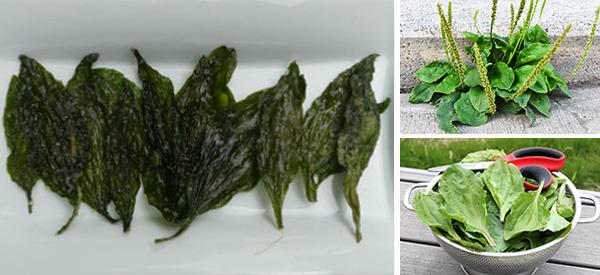
Healthy Pringles: The Nutritious Leaves That Make Crispy Chips
Updated: 13 March 2025
Plantain is a plant that has edible leaves. It has been used for thousands of years in traditional medicine. However, despite its name, the plantain plant has no relation to the banana-like fruit called plantain.
The plant is native to the northern areas of Africa, Europe, and northern & central Asia. The most common within the Plantain family is Plantago major, some of its common names being (aptly) common plantain, broadleaf plantain, healing blade, or greater plantain.
- Plantago major is a perennial plant that can now be found in many places around the world. Commonly thought of as a weed, it can be found in driveways and growing wild just about anywhere as it’s a fast grower and hardy. You can usually harvest the leaves from spring to fall (sometimes outside of these seasons too depending on your region).
- Plantago lanceolata is another common species and is very effective when used topically on insect bites, eczema, sores, or rashes. Plantago major is known for having many health benefits when taken orally and the leaves can be eaten fresh or cooked.
Medicinal Benefits Of These Plantain Chips
While all of the main species of plantain have medicinal benefits, Plantago major has probably been studied the most in terms of being ingested and the health benefits and nutrients it contains. For this reason, I will focus on this species but keep in mind there is a lot of cross-over between all of them so make the most of any edible plantain you have near you.
When ingested, the leaves act as a detoxifier. They can also help reduce inflammation due to several important compounds such as flavonoids, tannins, alkaloids, phenolic acid derivatives, terpenoids, and iridoid glycosides. They are full of important nutrients including iron, calcium, magnesium, potassium, zinc, phosphorus, manganese, copper, and vitamins A, C & K.
Here are some of the health conditions that plantain leaves can help treat and/or prevent:
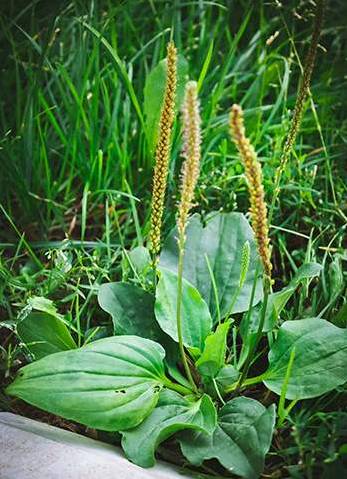
- Ulcers – can help prevent the formation of ulcers and also treat gastric ulcers.
- Cancer – inhibits the growth of cancer cells by fighting free radicals.
- Diabetes – the flavonoids help by reducing blood glucose levels.
- Digestive issues – can help treat digestive issues such as inflammatory bowel disease (IBS) and diarrhea by slowing the movement of the digestive tract. However, on the flip side, high doses can have a laxative effect.
- Kidneys – they are renoprotective and reduce serum creatinine levels, which high levels are a key indicator that kidneys aren’t functioning as they should.
The flavonoids and iridoid glycosides in Plantago major are anti-inflammatory so help protect against or treat many other common health conditions too such as arthritis, heart disease, epilepsy, and obesity.
This recipe also calls for grapeseed oil. This also provides health benefits and helps with:
- Blood clots – by reducing blood clotting.
- Heart disease – has high levels of vitamin E that reduces damage to cells, protecting against heart disease.
How To Identify Plantago Major In The Wild
You are quite possibly one of the lucky people to be living near these nutritious plants without even realizing it. The main things to look for are the plants’ distinctive flower spikes (the spike rises quite far above the leaves and has tiny flowers). The leaves grow at the base in a rosette. The leaves form in this style, loosely overlapping each other and there are 3 main types of plantain plants found in the US. Here is how to distinguish them: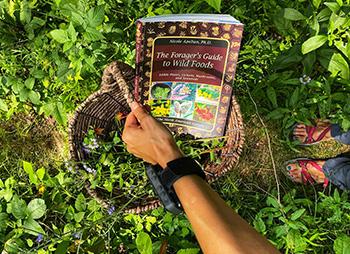
- Plantago major – has wide, oval-shaped leaves (2 – 8 inches long / 1.5 – 3.5 inches wide).
- Plantago lanceolata – has narrow, pointed leaves.
- Plantago rugelli – looks similar to the Plantago major except this species is taller and it has purple where the stem and leaf meet.
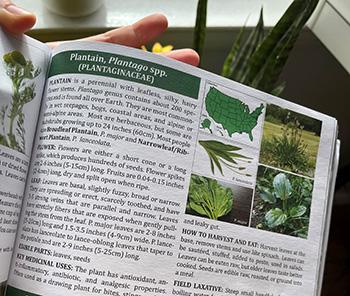 All 3 of these have edible leaves. If you’re not sure (and just for interest’s sake anyway) it’s a great idea to get a foraging book to reference. You may be surprised at what edible wonders are growing near your home. You can also get plant-identifying apps for your phone where you just take a photo of a species and the app will identify it for you. Some are very detailed and can work whether you take a photo of the flower of a plant, the leaves, or the entire plant.
All 3 of these have edible leaves. If you’re not sure (and just for interest’s sake anyway) it’s a great idea to get a foraging book to reference. You may be surprised at what edible wonders are growing near your home. You can also get plant-identifying apps for your phone where you just take a photo of a species and the app will identify it for you. Some are very detailed and can work whether you take a photo of the flower of a plant, the leaves, or the entire plant.
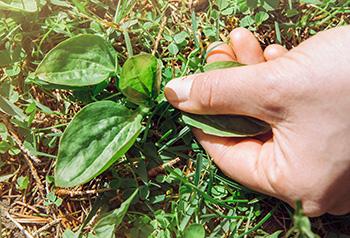 If you don’t have any Plantago major plants near you, they are very easy plants to grow from seeds in your own back garden. Just be careful to keep them segregated from other parts of your garden because this herb can spread easily and will self-sow so you could end up with a lot more than you bargained for. They will grow in a USDA zone of between 3 and 9 and they enjoy anything from partial shade to full sun.
If you don’t have any Plantago major plants near you, they are very easy plants to grow from seeds in your own back garden. Just be careful to keep them segregated from other parts of your garden because this herb can spread easily and will self-sow so you could end up with a lot more than you bargained for. They will grow in a USDA zone of between 3 and 9 and they enjoy anything from partial shade to full sun.
Another great use for these plants is their wound-healing properties. Containing flavonoids, polyphenols, and polysaccharides, the leaves can be used as a topical treatment for insect bites, wounds, and some skin conditions. While Plantago lanceolata is often cited as the best to use for topical medicine, other plantain plants also work.
How To Make These Plantain Chips
There are approximately 28 calories in a cup of raw plantain leaves (you can eat up to ½ cup of fresh plantain leaves per day). Each tablespoon of grapeseed oil contains 120 calories.
Ingredients
- Plantain leaves
- Grapeseed oil
- Salt (optional)
Utensils
- Sheet/baking pan
- Parchment paper
- Paper towel
Method
- Thoroughly wash your plantain leaves under running water and lay them flat on top of a paper towel to dry out a bit.

- Preheat your oven to 350 °F.
- Place some parchment paper over your sheet/baking pan (or multiple if you want to make a big batch).

- When they’re just about dry, transfer them onto the parchment paper so they are laid out flat and not overlapping too much.
- Drizzle some grapeseed oil over each leaf and add some salt now if you want to use it.

- Bake your leaves for around 6-8 minutes or until they are crispy.

Take them out and let them cool for a couple of minutes and you can eat them right away or store them in an airtight container for up to 1 week in the fridge. You can eat these plantain chips at any time of the day up until 3 hours before bedtime (because of the fat content from the oil). They make a great, healthy, and nutritious snack so enjoy.
Alternative Leafy Greens for Crispy Chips
If plantain leaves are not available or you prefer to explore other options, several nutritious leafy greens can serve as excellent alternatives for making crispy chips:
Kale: Known for its robust texture and rich nutrient profile, kale can be transformed into crispy chips by removing the stems, tearing the leaves into bite-sized pieces, tossing them in a light coating of oil and seasonings, and baking until crisp.
Spinach: With its tender leaves, spinach can be used to create delicate, crispy chips. It’s advisable to use larger spinach leaves, as smaller ones may disintegrate during preparation.
Sweet Potato Leaves: In many cultures, sweet potato leaves are consumed for their health benefits. They can be prepared similarly to plantain leaves to make crispy chips.
Water Spinach (Kangkong): Popular in Southeast Asian cuisine, kangkong leaves can be battered and deep-fried to create a crunchy snack known as “crispy kangkong.”
Cassava Leaves: In certain African and Asian cuisines, cassava leaves are utilized to prepare various dishes. When properly prepared, they can be used to make crispy chips.
Preparation Tips:
Cleaning: Thoroughly wash the leaves to eliminate any dirt or pesticides.
Drying: Ensure the leaves are completely dry before applying oil or batter to achieve optimal crispiness.
Seasoning: Lightly season the leaves with your choice of spices or herbs to enhance flavor without overpowering the natural taste.
Cooking Method: Depending on the leaf’s texture, choose between baking, frying, or dehydrating methods to achieve the desired crispiness.
By experimenting with these alternatives, you can enjoy a variety of crispy, nutritious snacks tailored to your taste preferences and ingredient availability.
You may also like:
Delicious Recipes Using Cattails: The Supermarket of the Swamp
Similar to Morphine: The Best Natural Painkiller that Grows in Your Backyard (Video)
How to Treat an Asthma Attack Naturally When You Don’t Have an Inhaler
6 Beneficial Weeds You Shouldn’t Have Pulled Out from your Garden!

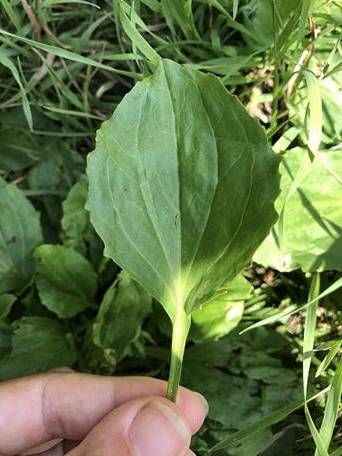
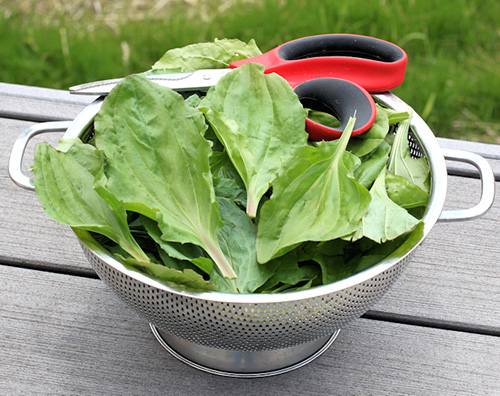
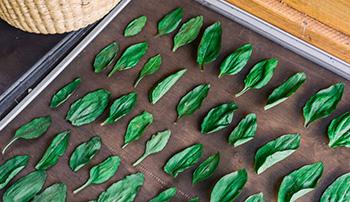
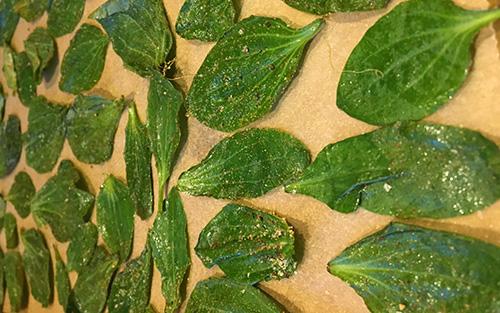
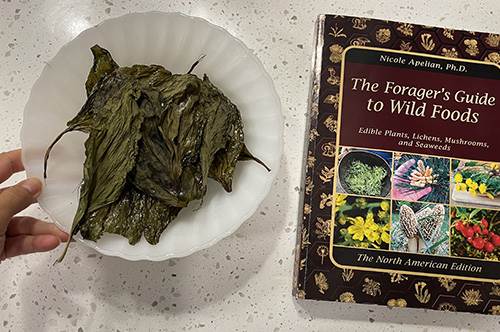
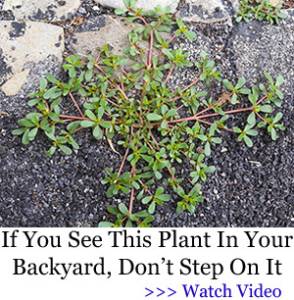
You mention you can eat up to 1/2 cup of plantain leaves per day . . . what happens if you eat more? Just curious, as I’ve not seen any similar warnings with more commonly eaten foods, which has me worried there are some negatives to consuming plantains. Thanks
And why up until 3 hours before bedtime. A lot of details are left out, I think, and it bothers me, too.
So you don’t wake up to use the loo, that’s all.
But the best is to always stop eating at 7:30 pm or at dusk.
Don’t eat them within 3 hours of going to bed because this is how long it takes fats and oils to digest. You want your digestive system to be resting when you go to sleep.
I suspect, it’s a reflection of the maximum amount for your kidneys to be stimulated. The best is to always eat 1/4 or less of anything recommended . Cells perform super efficiently with just a touch of something medicinal. By comparison, they do not perform when they are “drowned” in any single chemical, spice or nutrient.
Digestive issues – . However, on the flip side, high doses can have a laxative effect.
Her article said laxative effect.
I have a dehydrator, what are the directions for this type of prep?
can one use olive oil instead?
Hi Kelene,
Yes, you can use Olive oil instead.
Grapeseed oil and olive oil provide a similar set of nutrients, and both contain the same number of calories and amount of total fat per serving. However, while olive oil is rich in monounsaturated fats, grapeseed oil provides a higher amount of polyunsaturated fats and vitamin E.
Many blessings and good health!
i have been eating these since i was a kid, they also go into the wild greens mix that i dry and make into soup powders for soups and any other dish i might want to add greens to, before eating any wild plants ALWAYS ALWAYS check with an expert!
If this plant is not available locally, can it be procured & grown indoors?
Great question!! And the wonderful news is… “Yes!!” Many plants that we normally think of as being grown outdoors can actually be grown indoors…like celery for instance grows beautifully in a sunny window and delicious all year!
Is it similar to using kale leaves?
Great ideas…thanks!!
I ordered the Guide, but never received it. My neighbor also wants a copy. Could you please check to see why it was not mailed to me?
Hi Burton,
Please check your personal email. I sent you an email regarding your book order.
Many blessings and good health!
These are everywhere and I never knew! Love all the tips above. Thank you!
I’ve used wild plantain (or “white man’s foot”) to clear up poison ivy rash (topically & with a tea) for many years. I’m very excited to crisp them like kale chips! Excellent. Thank you
I have it growing in my ditch right now in Tennessee in December. Very excited to try this recipe. Your emails are like opening a Christmas present.